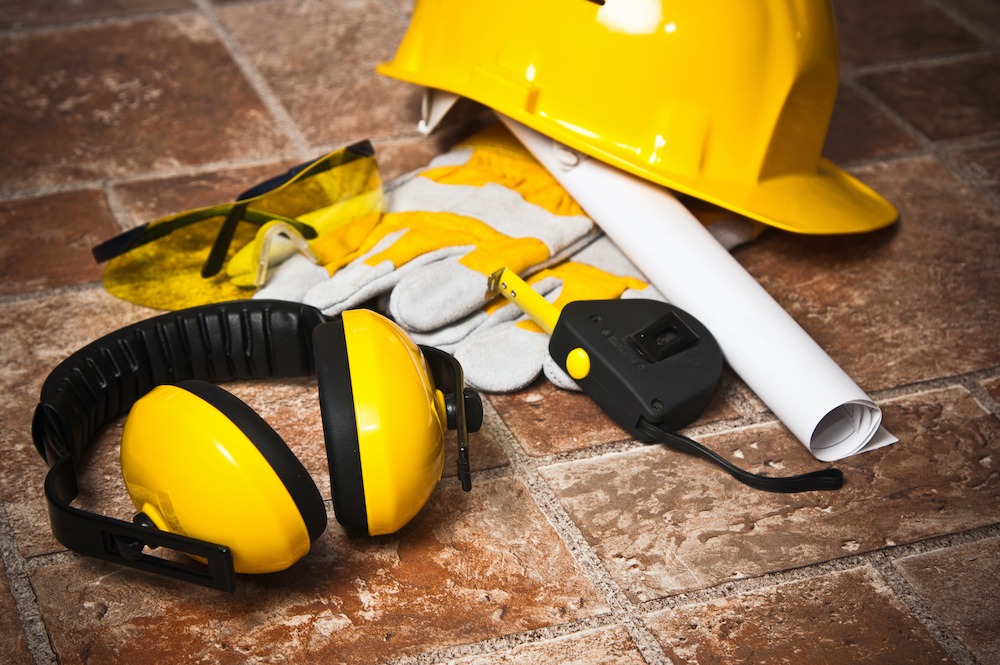Words: Bruce MacKinnon, CD – Regional Health and Safety Manager, AGF Access Group
When we look at the “hierarchy of controls” in construction, we always first consider eliminating the hazard, then hazard substitution, where possible we add engineering controls like fans or separators, administrative controls are always present through training and policies, but we never get away from using Personal Protective Equipment (PPE). As a control method, PPE is always the last line of defense but the one most often used in Construction.
This is just the nature of construction! But how do we ensure that the PPE we are using is going to do what we expect? Well, it starts with having a good Health and Safety program that include a Personal Protective Equipment policy and standard. This policy and standard needs to outline the process of selecting PPE, per ANSI standards and OSHA requirements, inspection, and proper fitting of the PPE, but most importantly, how to care for your PPE to ensure it will last and keep you safe.
When PPE is selected, it is critical to read, understand and follow the Manufacturer’s Instructions. You know! That little piece of paper that comes with your PPE that you do not read, or the tag on your fall arrest harness that you have not looked at. These documents and tags must be used to build your Personal Protective Equipment policy and standard.
To make it easy, use the head to toe approach:
1) Hard Hats
- Ensure you inspect it every day before putting it on,
- Replace a hard hat if it is cracked, dented, or shows any other sign of damage,
- Keep it clean – Wash it regularly with warm soapy water, wipe it dry and store in a safe location out of the sun (not thrown in the truck bed with your tools),
- Find the manufacturing date stamped on the hard hat – replace no more than three years past this date (yes they expire),
- If the hard hat falls more than 10’ to the ground or has taken a heavy blow – replace it, and
- Ensure the headband is not worn out and that the hat fits comfortably on the head.
2) Safety Glasses / Goggles (face-shields too!)
- Ensure you inspect them every day before putting it on,
- Replace the glasses if they shows any signs of damage or are heavily scratched,
- Keep it clean – Wash it regularly with warm soapy water, wipe it dry and store in a safe location it keep them scratch-free, and
- Follow the manufacture’s instructions on care, storage, and limitations such as impact or UV rating.
3) Respirators (non-disposable)
- Do not use someone else’s respirator,
- Use only the respirator you have been fit tested for,
- Ensure you inspect it every day before putting it on,
- Replace the respirator or parts of the respirator that fail inspection or are in questionable condition,
- Keep it clean – Wash it regularly with warm soapy water, wipe it dry and store in a safe location with the cartridges removed, in a sealed plastic bag or container away from the hazard,
- Follow the manufacture’s instructions on limitations, care, storage, and inspection,
- If the respirator fails the positive/negative fit test – replace it, and
- N95 respirators (yes they must be fit tested) have an expiry date on the box!
4) Ear Muffs
- Know your required NRR rated hearing protection,
- Ensure you inspect them every day before putting it on,
- Ensure they are dry before storage,
- Store them in a plastic bag or container,
- Keep it clean – wipe it down with an alcohol solution or wipe a few times a week, and
- Follow the manufacture’s instructions on care, storage, and limitations.
5) Fall Arrest Equipment
- Ensure you inspect all fall arrest components from the anchor to the body harness every day before putting it on,
- Have a Competent Person do a “documented” inspection of all the components from the anchor to the body harness at least four times a year,
- Replace any components if they show any signs of damage, chemical soiling, burns or the labels can no longer be read,
- Do not drag the harness or lanyards across the ground,
- Where needed, use softeners on edges that may cause damage to the lanyard or lifeline;
- Keep it clean – the manufacturer’s instructions will include how to wash your harness and lanyard,
- Do not throw the harness, lanyard, or lifeline in the back of the truck or in the toolbox – follow the manufacturer’s instructions, and
- Follow the manufacturer’s instructions on care, storage, and limitations.
6) Gloves
- Select the right glove for the job (get a glove selection chart online)
- Ensure you inspect them every day before putting it on – replace them if they fail inspection, and
- Ensure they are dry before storage.
7) Safety Boot
- Ensure you select the correct class for the job (green tag, orange tag, white tag),
- Check for damage or wholes in the sole or along with the midsole (along the welt),
- Keep the boots dry,
- Where excessive sweating occurs, change your socks at breaks and lunches, and
- Replace at least every 24 months.
8) Specialty PPE
- Get training on care, use, inspection, storage and limitations, and
- Follow the manufacture’s instructions
Remember, you are the one person who can keep “you” safe on the construction site and that starts with Safe Work Planning and keeping your personal protective equipment in good working condition!
Send Everybody Home Safe Everyday
